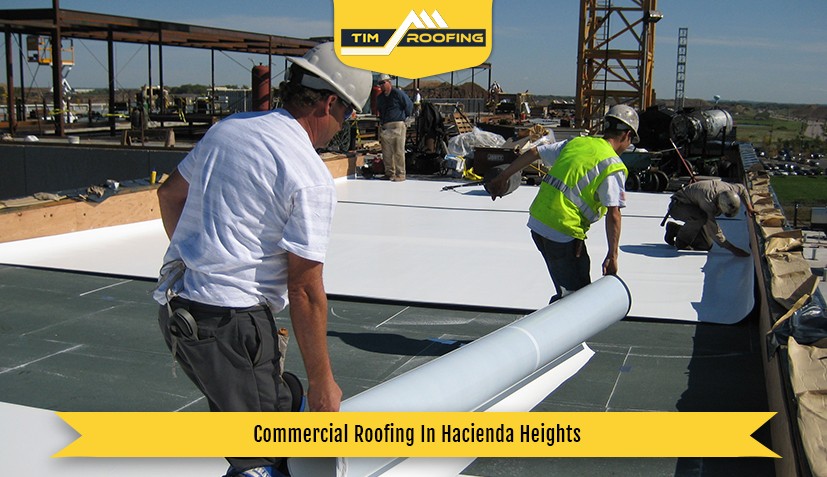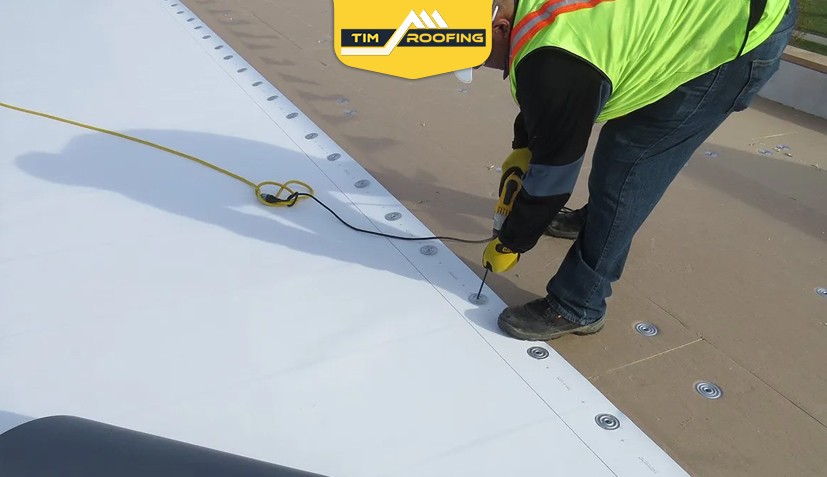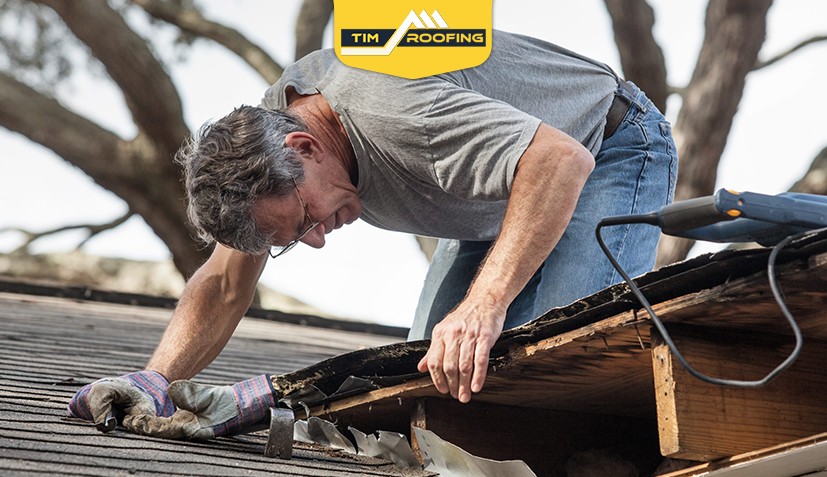The Different Types of Commercial Roof
There are several different types of commercial roofing systems available, each with its own advantages and disadvantages. Some of the most common types of commercial roofing in Hacienda Heights include:

Built-Up Roofing (BUR)
BUR systems are made up of several layers of asphalt and felt or other reinforcing materials. They are typically used on low-slope or flat roofs and are known for their durability and resistance to weathering
Modified Bitumen Roofing
Modified bitumen roofing is made up of a single-ply membrane that is reinforced with polyester or fiberglass. These roofs are highly resistant to UV rays and can be installed with a variety of methods including torch-applied, self-adhering, and hot-mopped
Thermoplastic Polyolefin (TPO) Roofing
TPO roofing is a single-ply membrane that is made from a blend of polypropylene and ethylene-propylene rubber. It is highly resistant to UV rays and can be installed with heat welding or mechanically fastened
Ethylene Propylene Diene Terpolymer (EPDM) Roofing
EPDM roofing is a rubber roofing membrane that is highly resistant to weathering and UV rays. It is typically installed with adhesive and is known for its low cost and ease of installation.

Metal Roofing
Metal roofing systems can be made from a variety of materials including aluminum, steel, copper, and zinc. They are highly durable and resistant to weathering but can be more expensive than other types of roofing systems
Different commercial roofing materials and their average cost per square foot:
| Material | Average Cost per Square Foot |
|---|---|
| Built-up Roofing (BUR) | $4.50 – $8.00 |
| Modified Bitumen (MB) | $5.00 – $8.00 |
| Thermoplastic Olefin (TPO) | $5.50 – $7.50 |
| Ethylene Propylene Diene Monomer (EPDM) | $4.50 – $7.50 |
| Metal Roofing | $7.00 – $12.00 |
The Different Parts of a Commercial Roof
A commercial roof typically consists of several different parts, each serving a specific function. Here are some of the common parts that Tim Roofing helps you to look after as a contractor for your commercial roof in Hacienda Heights
Roof Deck
The roof deck is the structural foundation of the roof system. It is usually made of plywood, concrete, or metal and provides the base for the other roofing components to be installed
Insulation
Insulation is installed over the roof deck to provide thermal resistance and energy efficiency. It helps keep the building warm in winter and cool in summer, reducing energy costs.
Roof Membrane
The roof membrane is the outermost layer of the roof and is designed to protect the building from the elements. It can be made of various materials, such as TPO, PVC, EPDM, or asphalt.
Flashing
Flashing is used to seal and protect the areas where the roof meets other structures, such as walls, chimneys, and skylights. It is typically made of metal and is essential for preventing water leaks.
Roofing Accessories
These include components such as gutters, downspouts, vents, and HVAC units. They are essential for proper drainage and ventilation, and their proper installation is crucial for the overall performance of the roofing system.
Commercial Roofing in Hacienda Heights – Tips to Follow
Contact our team to ensure the longevity and durability of your commercial roof in Hacienda Heights, here are some of the tips that you should follow:

Schedule Regular Inspections
Regular inspections by a professional commercial roofing contractor can help identify potential issues early and prevent them from becoming major problems.
Keep the Roof Clean
Debris such as leaves, twigs, and dirt can accumulate on the roof and clog the gutters and drainage system, leading to water damage. Regular cleaning of the roof can prevent this from happening.
Check for Signs of Damage
Look for signs of damage such as cracks, holes, or leaks. Addressing these issues promptly can prevent further damage and costly repairs.
Check for Signs of Damage
Look for signs of damage such as cracks, holes, or leaks. Addressing these issues promptly can prevent further damage and costly repairs.
Maintain Proper Drainage
Ensure that the gutters and downspouts are free of debris and are functioning correctly. Poor drainage can lead to water pooling on the roof, causing damage and leaks.
Trim Overhanging Branches
Trees that overhang the roof can cause damage by rubbing against the roof or dropping debris. Trimming these branches can prevent this from happening.

